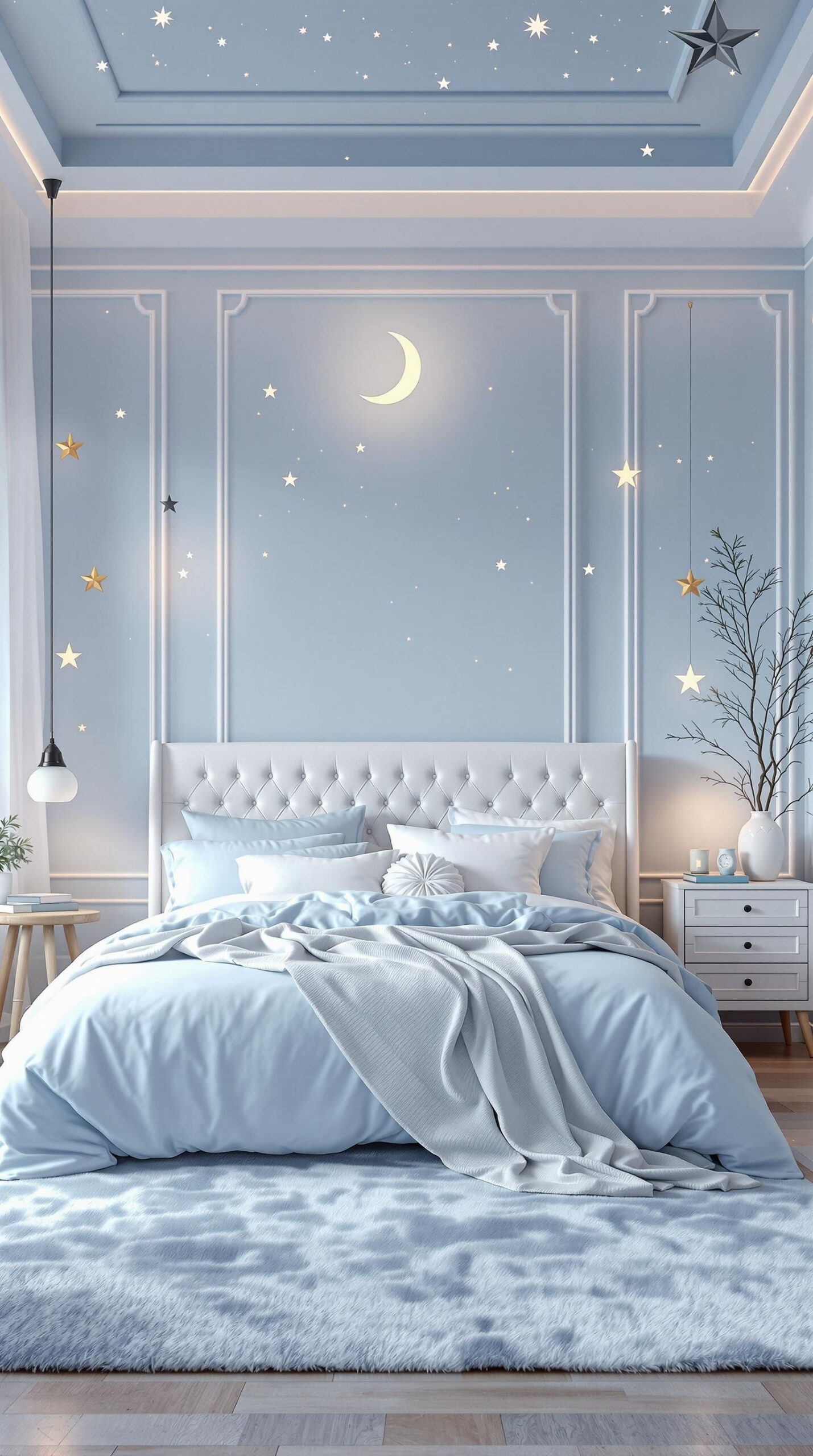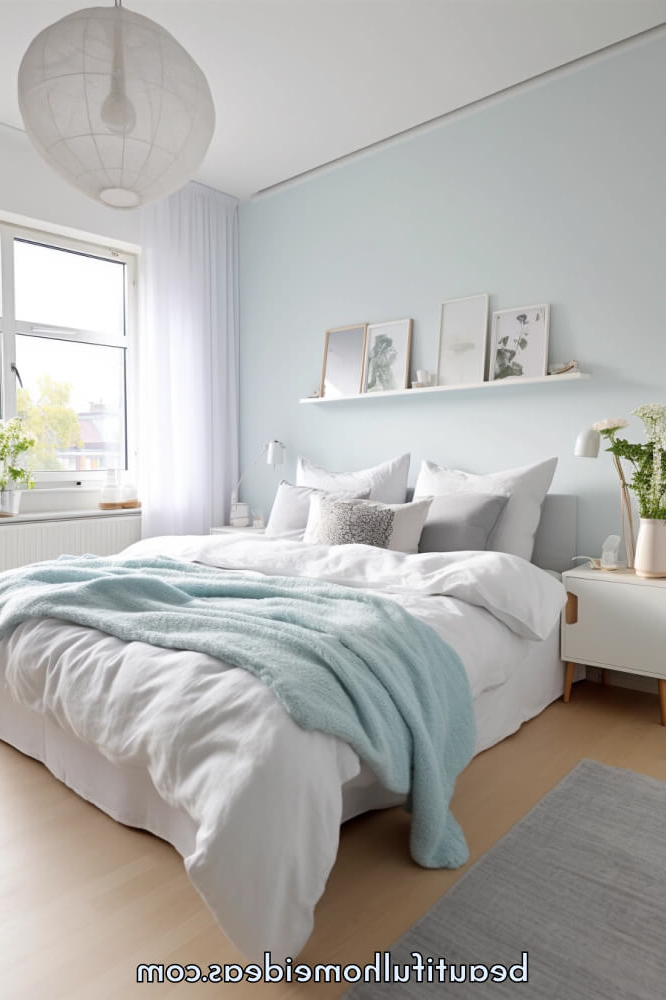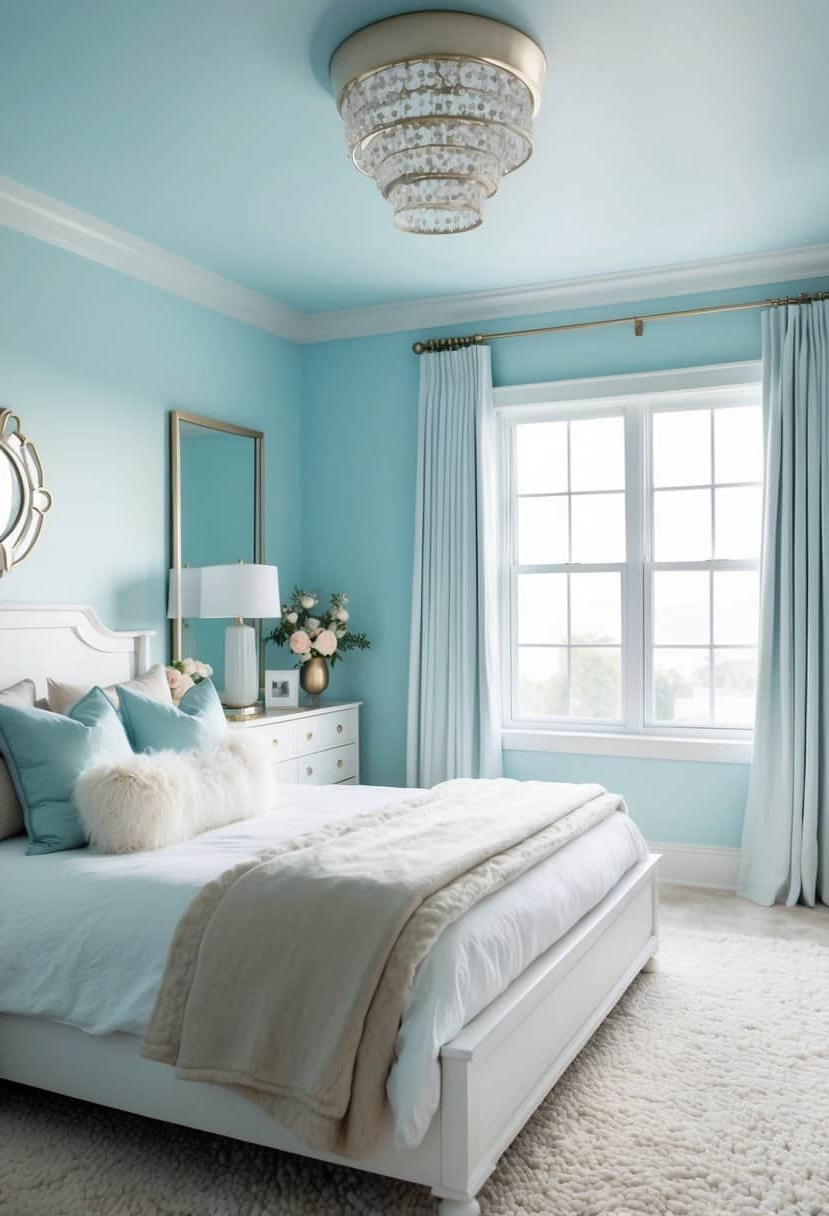Light blue has a special way of making a room feel calm and peaceful. But when you’re thinking about adding this hue to your bedroom, you might wonder how to do it right. Too much of anything can feel heavy, even the most soothing colors. The secret lies in balance, and we’ve got some tried-and-true tips to help you create that perfect light blue sanctuary.
Light blue is one of those colors that seems to naturally bring tranquility to any space. It’s linked to feelings of calmness, serenity, and peace. In bedrooms, where we spend a significant portion of our lives resting and rejuvenating, the right amount of light blue can work wonders. However, there’s a fine line between creating a soothing environment and accidentally flooding the room with too much of this delightful hue. The key isn’t just about choosing the right shade, but also about understanding how to layer and balance it within your existing decor. Let’s explore how to make light blue work beautifully in your bedroom without it taking over the whole room.
Choosing the Right Shade of Light Blue
Not all light blues are created equal. When selecting a color for your bedroom, think about the undertones and how they’ll interact with your lighting. A cool light blue might feel refreshing in a sunny room, while a warmer tone could add coziness in a darker space. Consider how the color will look during different times of day. Some blues appear more grayish in low light, while others seem more vibrant under bright sunlight. Test samples on your walls at different hours to see how they behave. A soft powder blue tends to be more forgiving than a bold sky blue. Think of it like choosing a comfortable sweater – you want something that feels right, not just looks good on paper. Sometimes, a subtle hint of green or lavender can make a huge difference in how the color appears.
Start Small Before Going Big
The safest approach to introducing light blue is to start with smaller elements. Try painting an accent wall rather than the entire room. You can also experiment with bedding, curtains, or artwork. This allows you to get a feel for how the color works in your specific space before committing to larger changes. Small touches give you the opportunity to adjust if something feels off. If you’re worried about the impact, consider using a light blue throw pillow or a small area rug. These elements can provide the calming effect you’re seeking without dominating the visual landscape. Plus, they’re easy to change if you decide you want to tweak the look later. Think of it like seasoning a dish – add a little at a time until you get it just right.
Balance Light Blue With Neutral Colors
One of the most effective ways to prevent light blue from overwhelming a space is to pair it with neutral tones. White, beige, cream, and soft grays create a nice backdrop that lets the blue shine without competing. These colors help to keep the room feeling airy and open. When you combine light blue with neutral elements, you’re essentially creating a breathing room for the color to exist. Imagine a white bed frame against a light blue wall – the contrast helps define the space while maintaining harmony. You can also use neutral textures like linen or cotton to soften the overall appearance. The goal is to create a visual rhythm that guides the eye around the room rather than making it feel too focused on one element.
Use Light Blue as an Accent Rather Than a Focal Point
Letting light blue serve as an accent color gives it room to breathe and express itself without demanding attention. Instead of making it the main color of your bedroom, let it complement your primary hues. This approach works particularly well when you’re working with a neutral base. For example, if your walls are white, a light blue dresser or nightstand can create a beautiful focal point without overwhelming the senses. You can also use light blue in smaller decorative items like vases, books, or candles. These subtle additions create a sense of cohesion and continuity throughout the space. The idea is to create layers of color that support each other rather than fight for dominance.
Consider the Size and Scale of Your Bedroom
The size of your room plays a crucial role in how light blue will feel. In a large bedroom, you have more flexibility to use bolder applications of the color. In a smaller space, however, light blue can easily feel cramped or overwhelming if not handled carefully. If you’re working with a compact bedroom, opt for lighter, more diluted versions of the color. A pale baby blue might work better than a deeper light blue. Also, consider how furniture and fixtures will interact with the color. Large furniture pieces in light blue can make a small room feel even more confined. Smaller accents are usually safer choices for tight spaces. Sometimes, the best approach is to use the color strategically in areas where you won’t be spending too much time, like a small accent wall or a decorative element.
Incorporate Natural Elements to Soften the Impact
Adding natural materials can help balance the visual weight of light blue. Wood, plants, and textiles made from natural fibers create warmth and organic texture that can counteract any potential coldness from the color. A wooden nightstand in a light blue room can add grounding and visual comfort. Plants, especially those with green leaves, provide a natural counterpoint that makes the blue feel less artificial. Even simple elements like a woven basket or a natural fiber rug can soften the overall effect. These organic touches remind us that nature often provides the perfect balance in design. They also help create a more lived-in, comfortable feel that makes the space feel truly welcoming rather than overly styled.
Adding light blue to your bedroom can create a wonderful sense of calm and relaxation when done thoughtfully. The key is to remember that less is often more, especially when dealing with such a soothing yet powerful color. Start small, choose your shades wisely, and always consider how everything else in the room will interact with your blue. Balance it with neutral tones, use it as an accent rather than a dominant feature, and never forget about the size of your space. By following these principles, you’ll be able to enjoy the many benefits of light blue without ever feeling like it’s taking over your peaceful retreat. Creating a bedroom that truly works for you is about finding that perfect balance, and light blue can definitely be part of that equation.















